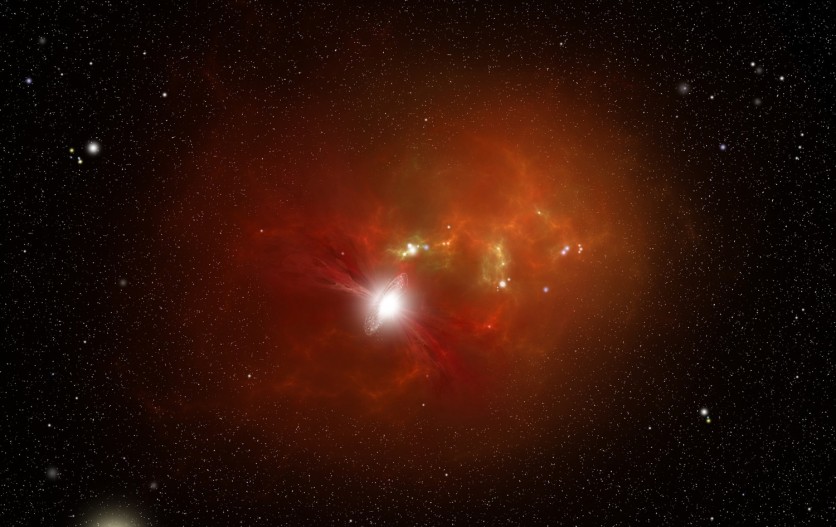NASA's James Webb Space Telescope (JWST) has made a remarkable discovery after identifying a new type of supernova.
Astronomers from the Space Telescope Science Institute (STScI) made it possible. This supernova, designated SN 2023adsy, is notable for being the most distant Type Ia supernova detected to date.

A New Type la Supernova
Supernovae are generally classified into two groups depending on their atomic spectra: Type I, which lack hydrogen in their spectra, and Type II, which displays hydrogen spectral lines.
Type Ia supernovae, or SN Ia, occur in binary systems where one of the stars is a white dwarf. These stellar explosions are crucial for scientists as they provide important insights about the development of stars and galaxies.
SN 2023adsy was first discovered last year as a transient object hailing from the galaxy JADES-GS+53.13485-27.82088. A new study led by STScI's Justin R. Pierel has now unearthed more details about this supernova.
The team presented JWST observations of SN 2023adsy, which revealed a spectroscopic redshift of z = 2.903 ± 0.007. Based on spectrum and light curve data, this classification confirms it as the most distant SN Ia discovered so far.
The images show that SN 2023adsy appears extremely red, which could be attributed to a huge dust attenuation from its host galaxy, JADES-GS+53.13485-27.82088. Despite this, the host galaxy has relatively low mass, metallicity, and extinction, suggesting that the supernova could be intrinsically red, according to the research team.
The obtained images also show that the newly-discoverd supernova is very red. The study further revealed that SN 2023adsy exhibits strong ionized calcium spectral lines (Ca II) with a measured velocity of around 19,000 km/s, which is higher than what is typically observed in known SNe Ia.
The researchers noted these characteristics are also seen in some calcium-rich Type Ia supernovae. However, SN 2023adsy is intrinsically brighter than the general population of low-redshift calcium-rich SNe Ia.
The study's authors emphasized the need for more observations of Type Ia supernovae to determine whether SN 2023adsy is an outlier or if the properties of these supernovae vary significantly with redshift due to changes in their progenitors or environment.
They concluded that a larger sample of distant SNe Ia is essential to ascertain if the characteristics of high-redshift SN Ia populations truly diverge from their low-redshift counterparts and to confirm that standardized luminosities remain constant with redshift. Obtained images also show that this newly-discoverd supernova is very red.
NASA James Webb Space Telescope Provides a Detailed Look at an Early Supernovae
In related news, the Webb telescope has recently provided scientists with a detailed look at supernovae from an earlier period in the universe. A team of astronomers leveraging Webb found 10 times more supernovae in the early universe than previously detected.
NASA noted that Webb can identify extremely distant supernovae due to the cosmological redshift, which stretches their light into longer wavelengths. Learn more about the star-exploding story here.
Related Article : ESA Showcases the Ancient Echo of an 800-year-old Supernova Explosion

ⓒ 2025 TECHTIMES.com All rights reserved. Do not reproduce without permission.




